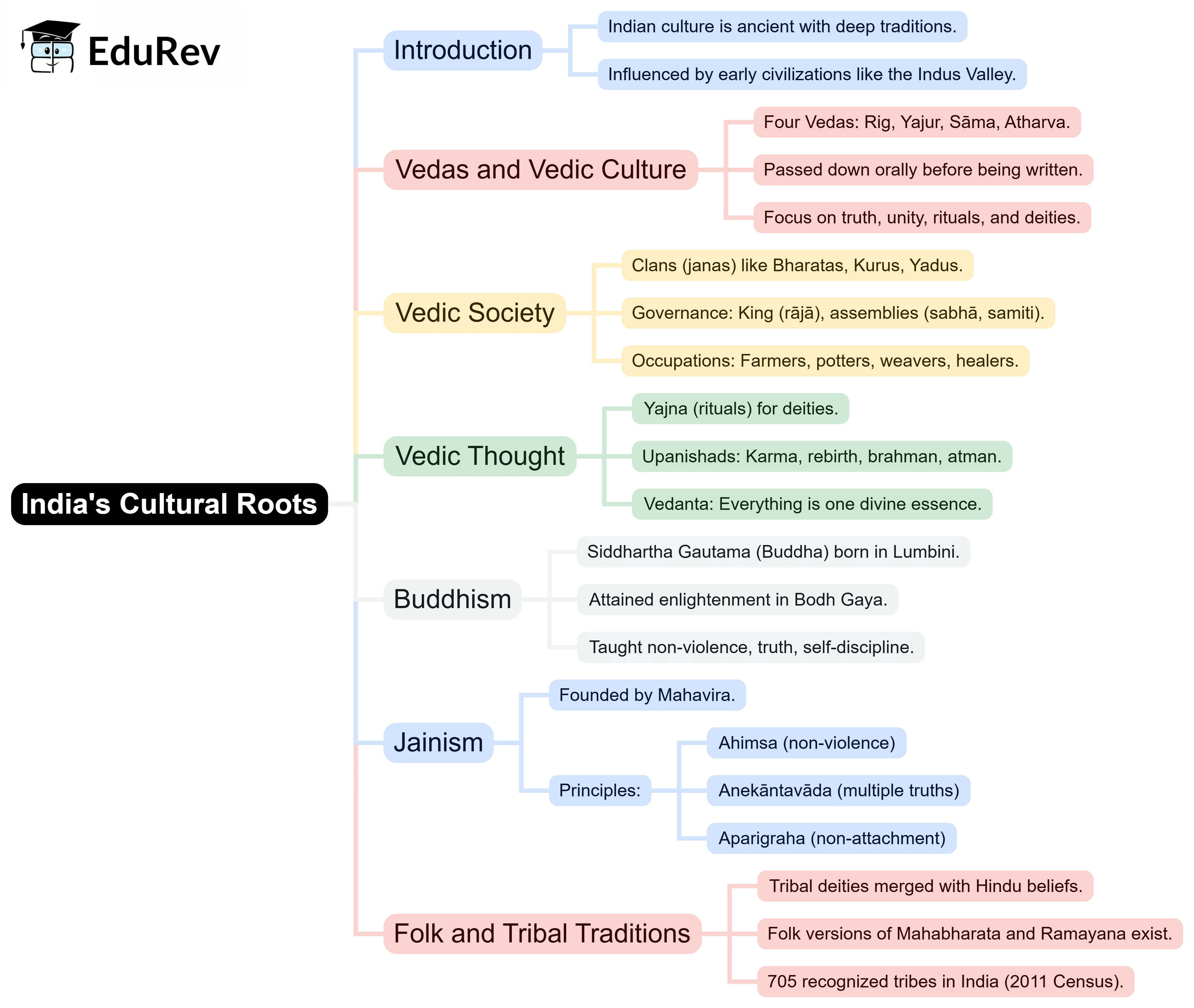Class 6 Exam > Class 6 Notes > Subject-Wise Mind Maps for Class 6 > Mind Map: India`s Cultural Roots
Mind Map: India`s Cultural Roots | Subject-Wise Mind Maps for Class 6 PDF Download

The document Mind Map: India`s Cultural Roots | Subject-Wise Mind Maps for Class 6 is a part of the Class 6 Course Subject-Wise Mind Maps for Class 6.
All you need of Class 6 at this link: Class 6
FAQs on Mind Map: India`s Cultural Roots - Subject-Wise Mind Maps for Class 6
| 1. What are the major cultural influences in India’s history? |  |
Ans. India’s cultural roots are deeply influenced by various civilizations, including the Indus Valley civilization, the Vedic period, and the Maurya and Gupta empires. Each era contributed unique elements to India's culture, such as language, religion, art, and philosophy. Additionally, foreign influences from invasions, trade, and colonialism have also shaped Indian culture, creating a rich tapestry of traditions and practices.
| 2. How does religion play a role in India's cultural roots? |  |
Ans. Religion is a significant aspect of Indian culture, with major religions like Hinduism, Buddhism, Jainism, and Sikhism originating in the region. These religions have not only influenced spiritual practices but also art, festivals, and social customs. For example, festivals like Diwali and Holi reflect Hindu beliefs, while Buddha Purnima highlights Buddhist teachings. The coexistence of various religions promotes diversity and harmony in Indian society.
| 3. What are some traditional Indian art forms that reflect its cultural roots? |  |
Ans. India boasts a plethora of traditional art forms that showcase its cultural heritage. Notable examples include classical dance forms like Bharatanatyam and Kathak, the intricate designs of Madhubani and Warli paintings, and the vibrant textiles of handloom weaving. Each art form tells a story and embodies the values and traditions of the regions they originate from, thus preserving India’s cultural identity.
| 4. How do festivals in India represent its cultural diversity? |  |
Ans. Festivals in India are a reflection of its vast cultural diversity, celebrating various religious and regional traditions. For instance, Diwali is celebrated by Hindus, Eid by Muslims, and Christmas by Christians, showcasing the coexistence of different faiths. Additionally, regional festivals like Pongal in Tamil Nadu and Bihu in Assam highlight local customs. These celebrations foster community spirit and promote understanding among diverse groups.
| 5. What is the significance of languages in India’s cultural heritage? |  |
Ans. India is home to numerous languages, with Hindi and English being the most widely spoken. Each language carries its own literature, idioms, and cultural expressions, adding richness to the nation's heritage. The diversity of languages represents the various ethnic groups and cultures within India, emphasizing the importance of linguistic preservation as part of cultural identity. Furthermore, languages facilitate communication and understanding among different communities.
Related Searches






















